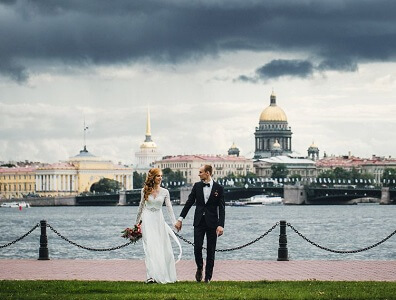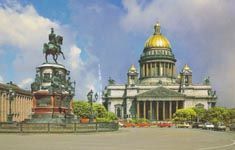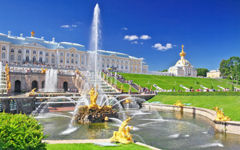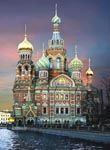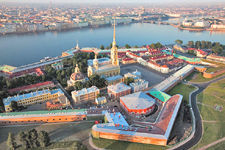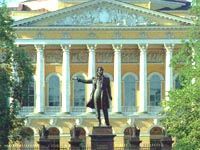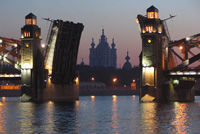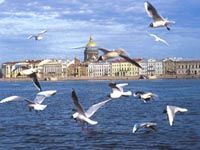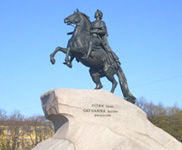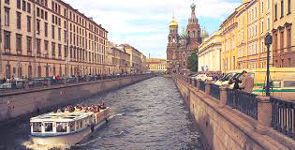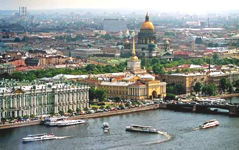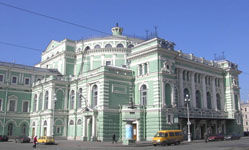Romantic trip to Saint Petersburg Russia
Find your true love with Russian woman
Saint-Petersburg (St. Petersburg) is the second largest city in Russia by population after the capital Moscow.
It is located in the northwest of the country on the delta of the Neva River, in the Gulf of Finland in the Baltic Sea. St. Petersburg was the capital of the Russian Empire from 1712 until March 1917 (as well as the Russia led by two provisional governments between March and October 1917); St. Petersburg has preserved from this time a unique architectural ensemble making it one of the most beautiful European cities.
It is the second Russian port on the Baltic Sea after Primorsk, and is a major center of industry, research and Russian education as well as a major European cultural center. St. Petersburg is the second largest city in Europe by area and fifth in population.
St. Petersburg was founded in 1703 by Tsar Peter the Great in a long-disputed region located in Sweden. With its resolutely modern urbanism and aesthetics of foreign origin, the new city was to allow Russia to "open a window to Europe" and contribute, as requested by the tsar, to the elevation of Russia to the rank of a major European power.
The center, built on the directives of Russian rulers, features a unique architecture that blends architectural styles (Baroque, Neoclassical) acclimated in an original way by architects often of Italian origin. The city has been on the list of UNESCO World Heritage since 1990.
St. Petersburg has changed names several times: it was renamed Petrograd from 1914 to 1924 and Leningrad from 1924 to 1991 before returning to its original name after a referendum in 1991.
Built on an uninhabited swamp, the imperial capital is now a grand metropolis, whose majesty continues to dazzle visitors. Water is everywhere in St. Petersburg. The city has 342 bridges.
With elegant canals and imposing Neva River, the bridges are raised at night to let boats pass, the city has naturally attracted comparisons with Venice (the city’s beauty combined with its channel system have earned it the nickname "Venice of the North"). In addition, St. Petersburg holds invaluable artistic and cultural treasures. One can spend days at the Hermitage Museum contemplating Egyptian mummies and Picasso paintings. For nightlife, the long summer days when the sun goes down just below the horizon, the "White Nights" are legendary. The festivities begin in May, with the arrival of spring. They culminate in mid-June: the sun never sets, festivals are in full swing in the concert halls and the whole city seems to celebrate this short but splendid summer.
Best of St. Petersburg city
White Nights
The best time to visit St. Petersburg is in mid-June, when the sun slowly descends toward the horizon without ever really setting: these nights have a magical light. The Petersburgers celebrate. The city hosts numerous festivals and the atmosphere is very relaxed. Although there are many tourists, and most hotels are booked weeks in advance, there is nothing as wonderful as those sleepless nights! And even if you come in May or July, you will be impressed by the length of days.
Hermitage Museum
This emblematic place, which is perhaps the largest museum in the world, counts among its treasures Egyptian mummies, more Rembrandt paintings than the Louvre, and a collection of works of art of the twentieth century unique in the world. Visiting the beautiful apartments and splendid reception rooms of the Romanovs is included in the ticket. The city has other museums, including the Winter Palace, the building of the General Staff, the Menshikov Palace, Imperial porcelain factory and the Hermitage Reserves.
The panorama from St. Isaac
You will not find a more beautiful view of the historic center than from the stunning golden dome of St. Isaac's Cathedral, which dominates the Italian palaces and mansions surrounding the Admiralty. Do not hesitate to climb the 262 stairs to the top to enjoy the fantastic view of the Neva, the Winter Palace and the Bronze Horseman, monumental equestrian statue of Peter I, made by Etienne Falconet. The interior of the cathedral is also worth a visit with its splendid iconostasis framed by marble columns, malachite and lapis lazuli.
Russian Museum
The Hermitage is undoubtedly the most impressive museum in St. Petersburg. However, this should not discourage you from visiting the Russian Museum. Lesser known, it occupies four magnificent palaces of the city center. The principal, Mikhailovsky Palace, offers a collection of fascinating works, icons of the Middle Ages to the masterpieces of the avant-garde of the twentieth century. The Marble Palace, for its part, is home to a wing of the Ludwig Museum while the Stroganov Palace stands out for its interiors, the most spectacular of the city.
The Church of the Savior on Spilled Blood
Built from 1883 to 1907 in honor of the death of Tsar Alexander II who was killed by a bomb thrown by a Socialist terrorist at this spot while leaving the theater, this neo-Muscovite style church resembles Basil the Blessed in Moscow, but is much more refined and better decorated. Saved by Russian scientists miraculously during the Soviet period, the church served as a depot for 50 years and was restored in the 90s. Famous for its five "onion" bulbs of different sizes, the Church of the Savior on Spilled Blood is as breathtaking from the inside as it is from the outside with marble inlay floors, walls and mosaics by Smalte which tell the story of the New Testament.
Tsarskoye Selo
("Tsar of the village"), probably one of the most beautiful imperial palaces of Saint Petersburg, is an idyllic place for a day trip. Better get there early to enjoy the sumptuous interiors of the Catherine Palace, including the famous amber room, for the fantastic French gardens and picnic in the park where Catherine the Great liked to stroll. Not far away, the domain and the picturesque palace of Pavlovsk, less frequented, are also worth a visit.
Mariinsky Theater
What could be more Russian than to see a ballet at the famous Mariinsky Theater? The former Kirov, who had the star dancers including Nureyev and Baryshnikov, is one of the top ballet companies in the world. Shows are very popular, so you should book your tickets online before you leave. Even if you do not relish the dance, the historic building is worth a look, as is the new Mariinsky Theatre nearby, the first ballet room to have emerged in Russia since the Revolution.
Peter and Paul Fortress
It was the first building of St. Petersburg, built on the small island Zayatchy in 1703, when Peter the Great laid the foundations of the city. It is recognizable by its gilded spire. 122 m high (a feat in the eighteenth century), it is visible throughout the center. History buffs will appreciate this giant creation. You can see the tombs of the Romanovs, visit an excellent historical museum and relax on a beach enjoying the magnificent view of the Hermitage!
A trip on the canals of St. Petersbourg
St. Petersburg appears in all its glory when one crosses the canals. Boats never became the main means of transport of the "Venice of the North", despite the efforts of Peter the Great. However, a trip on the canals and the river, day or night, is a must. Boats are available everywhere in the city and allow you to explore charming canals, discover the architectural jewels and navigate the majestic Neva.
Peterhof Castle
Located about 30 km from St. Petersburg in the Gulf of Finland, the Castle of Peterhof is one of the summer residences of Peter I. Given that its architecture was inspired by the Palace of Versailles, it is sometimes nicknamed the Versailles of the North. The tsar decided to build this palace in 1720, following a trip to France. He wanted to make a grander palace than its French equivalent. His successors have constantly revised over time. In 1770, Catherine II even worked to restore its entire interior. The horrors of World War II left it in ruins but restoration work has given it back all its glory.
Once a member of Inter-Mariage (see our terms here), if you want to go to St. Petersburg (Russia), I will take care of organizing your trip with my partner agency so that you can directly meet the beautiful Russian women looking for Love and for a sincere and lasting union.
Here are the rates of partner agency in Saint Petersburg:
- Driver to welcome you at the airport upon arrival in St. Petersburg + bring you to the airport upon departure (70 Euros).
- A stay in a 3 star mini-hotel in the center close to all amenities (from 80E to 130E) or luxury apartment in the city center (from 70E to 100E).
- During your stay you have access to a English-Russian interpreter guide (on request) (15 Euros / hour).
- Organizing meetings with the women of the Saint Petersburg agency + ongoing support from the partner agency (booking of the hotel or apartment, general organization of your stay on site, advice, monitoring ...)
- 1-4 meetings: 250 euros
- 5-7 meetings: 400 euros
- 8-10 meetings: 550 euros
Airline tickets, food and the outputs are your responsibility.
So make the right choice, make the INTER-MARRIAGE choice: click here to start your new life.


